How can businesses keep their fleet running smoothly without unexpected breakdowns or ballooning repair costs? Effective fleet vehicle maintenance is the answer. Proper upkeep ensures vehicles remain safe, reliable, and cost-efficient, directly impacting your operations and bottom line. This guide dives into every aspect of managing your fleet’s maintenance—from scheduling and servicing types to best practices, cost management, and meeting regulatory standards—empowering you to optimize your automotive fleet maintenance program and reduce downtime.
Understanding Fleet Vehicle Maintenance
What Is Fleet Vehicle Maintenance?
Fleet vehicle maintenance refers to the routine and scheduled servicing, inspection, and repair of all vehicles within an organization’s fleet. It includes preventive servicing, corrective repairs, and ongoing checks to keep vehicles in optimal condition, ensuring safety, reliability, and compliance with legal requirements.
Key Components and Goals
The primary objectives of automotive fleet maintenance are to extend vehicle lifespan, reduce unscheduled downtime, improve fuel efficiency, and maintain safety. This process involves tasks like oil changes, brake inspections, tyre monitoring, fluid top-ups, and more complex repairs when needed. When managed effectively, it cuts overall costs and supports smooth fleet operations.
Scheduling and Types of Fleet Maintenance
Preventive vs Corrective Maintenance
Preventive maintenance focuses on regularly scheduled inspections and servicing before issues develop, such as oil changes, tyre rotations, and fluid checks. This proactive approach reduces the risk of breakdowns and major repair bills. In contrast, corrective maintenance addresses vehicle problems after they occur, often resulting in more costly repairs and unplanned downtime.
Predictive Maintenance and Its Advantages
Emerging technologies enable predictive maintenance, which uses sensors and data analytics to forecast when parts will need replacement or servicing. This optimizes timing for fleet maintenance and repair, reducing unexpected failures and improving asset availability.
Best Practices for Fleet Maintenance and Repair
Implementing a Maintenance Schedule
Establishing a consistent maintenance schedule is critical for keeping a fleet operational and compliant. Base service intervals on manufacturer recommendations, mileage, and vehicle usage. Use digital tools or software to track schedules and send reminders for upcoming servicing.
Daily Vehicle Inspections and Driver Engagement
Encourage drivers to perform basic vehicle checks before and after trips. These inspections help spot early signs of issues (like warning lights, tyre condition, and fluid leaks) that can prevent costly repairs. Training drivers on their role in fleet repair and maintenance boosts overall fleet health.
- Monitor tyre pressure and tread depth regularly.
- Check brake functionality and fluid levels.
- Inspect lights and signals for safety and legal compliance.
- Ensure engine oil and coolant levels are adequate.
- Maintain cleanliness of air filters and other critical components.
Cost Management Strategies in Fleet Vehicle Servicing
Balancing Scheduled Maintenance and Repairs
Proactive planning significantly reduces emergency repairs, which tend to be costlier. By scheduling routine services such as oil changes and brake servicing, you keep repair expenses predictable and manageable. Contracting with reliable service providers or using fixed-price maintenance plans can also help contain costs.
Tracking Maintenance Expenses and ROI
Use fleet management systems to collect data on maintenance and repair spending. Analyzing this information reveals trends, helps identify expensive problem areas, and supports decisions that improve return on investment. Investing in quality parts and timely repairs extends vehicle life and reduces total cost of ownership.
Ensuring Regulatory Compliance in Fleet Vehicle Maintenance
Understanding Legal Obligations
Fleet managers must ensure that all vehicles comply with national safety, emissions, and inspection regulations. Keeping a fleet compliant prevents fines, legal actions, and safety risks. This includes regular MOTs, emissions testing, and safety inspections depending on the vehicle type and jurisdiction.
Maintaining Detailed Maintenance Records
Accurate documentation of all services, repairs, inspections, and parts replacements is essential. These records demonstrate compliance during audits and inspections, support warranty claims, and improve accountability across your fleet vehicle servicing operations.
The Role of Technology in Fleet Repair and Maintenance
Fleet Maintenance Software Benefits
Fleet maintenance management software centralizes scheduling, record-keeping, and communication. It automates service reminders, tracks vehicle condition, and produces comprehensive reports for managers, which streamlines fleet repair and maintenance efforts.
Telematics and Predictive Analytics
Integrating telematics devices allows real-time monitoring of fleet vehicle performance, alerting managers to potential issues earlier than traditional inspection methods. Coupled with predictive analytics, this technology helps optimize servicing intervals and reduce downtime.
Best Practices Summary and Next Steps
In summary, effective fleet vehicle maintenance hinges on understanding the types of maintenance, implementing consistent schedules, engaging drivers, and adopting technological tools. Proper cost management and strict regulatory compliance are equally critical to success. By following the guidelines outlined here, businesses can maximize vehicle uptime, reduce repair costs, and promote safer operations. To further enhance your fleet’s efficiency and reliability, explore advanced fleet maintenance solutions and software tailored to your needs.




